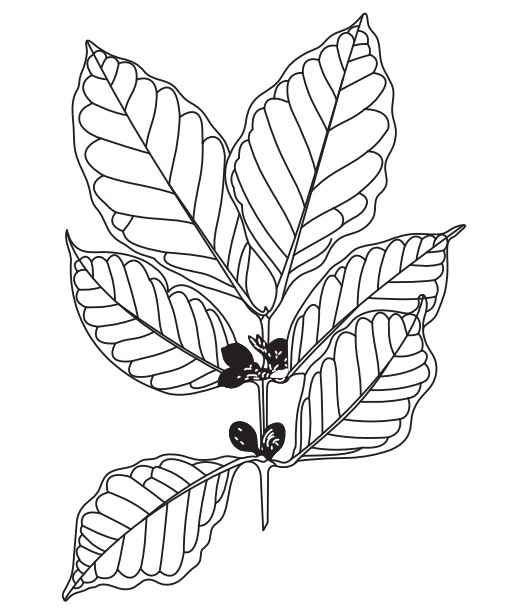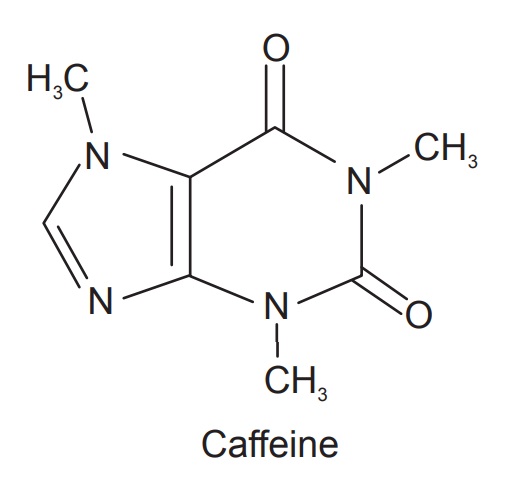Coffee
| Home | | Pharmacognosy |Chapter: Pharmacognosy and Phytochemistry : Drugs Containing Alkaloids
It is the dried ripe seeds of Coffea arabica Linn, belonging to family Rubiaceae.
COFFEE
Synonyms
Coffee bean, coffee seed, Arabica coffee, Arabian coffee, Abyssinian coffee, Brazilian coffee.
Biological Source
It is the dried ripe seeds of Coffea arabica Linn, belonging to family Rubiaceae.
Geographical Source
It is indigenous to Ethiopia, Brazil, India, Vietnam, Mexico, Guatemala, Indonesia and Sri Lanka.
History
The Coffee shrub was introduced into Arabia early in the fifteenth century from Abyssinia, and for two centuries, Arabia supplied the world’s Coffee; at the end of the seventeenth century the Dutch introduced the plant into Batavia, and from there a plant was presented to Louis XIV in 1714. All the Coffee now imported from Brazil has been imported from that single plant. The European use of Coffee dates from the sixteenth century when it was introduced into Constantinople, and a century later in 1652 the first Coffee shop was opened in London. In 1858 the quantity imported into the United Kingdom was over sixty million pounds. The major suppliers of coffee nowadays are Brazil and India. Karnataka, Kerala and Tamil Nadu grow large plantation of coffee.
Cultivation and Collection
Propagation is usually by seed; however, budding, grafting, and cuttings have been used. Traditional method of plants on virgin soil is to put 20 seeds in each hole, 3.5 × 3.5 m at the beginning of rainy season. Half are eliminated naturally. In Brazil, a more successful method is to raise seedlings in shaded nurseries. At 6–12 months, seedlings are taken to fields, hardened, and then planted on contoured fields 2–3 m apart in 3–5 m rows. Holes are prepared 40 × 40 × 40 cm and 4 seedlings placed in each. Plants may be shaded by taller trees or left unshaded.
Average economic age of plants 30–40 years, with some 100 year old plantations still bearing. Trees come into bearing three to four years after planting and are in full bearing at six to eight years. Fruits mature seven to nine months after flowering. Selective picking of ripe red fruits produces highest quality. Crop ripens over a period of several weeks. In Brazil all berries are stripped at one time onto ground cloths, usually in April to June; in Ethiopia, harvest season is October to December after the rainy season. Berries are dried in sun; in some humid areas, artificial heat is used. Depulping after picking is increasingly practiced.

Characteristics
Evergreen, glabrous shrub or small tree, up to 5-m tall when unpruned. Leaves opposite, dark green, glossy, elliptical, acuminate-tipped, short-petioled, 5–20 cm long, 1.5–7.5 cm broad, usually 10–15 cm long and 6 cm broad. Flowers white, fragrant, in axillary clusters, opening simultaneously 8–12 days after wetting; corolla tubular, 1 cm long, 5-lobed; calyx small, cup-shaped. Fruit a drupe, about 1.5 cm long, oval-elliptic, green when immature, ripening yellow and then crimson, black upon drying, 7–9 months to maturity. Seeds usually 2, ellipsoidal, 8.5–12.5 mm long, inner surface deeply grooved, consisting mainly of green corneous endosperm and small embryo.
Chemical Constituents
The main constituents of coffee are caffeine, tannin, fixed oil and proteins. It contains 2–3% caffeine, 3–5% tannins, 13% proteins, 10–15% fixed oils. In the seeds, caffeine is present as a salt of chlorogenic acid. Also it contains oil and wax.

Chemical Tests
1. Caffeine and other purine alkaloids, gives murexide colour reaction. Caffeine is taken in a petridish to which hydrochloric acid and potassium chlorate crystals are added and heated to dryness. A purple colour is obtained by exposing the residue to vapours of dilute ammonia. In addition of fixed alkali the purple colour disappears.
2. Caffeine also produces white precipitate with tannic acid solution.
Uses
Coffee is widely used as a flavoring agent, as in ice cream, pastries, candies and liquors. Source of caffeine, dried ripe seeds are used as a stimulant, nervine and diuretic, acting on CNS, kidneys, heart and muscles. Very valuable in cases of snake-bite, helping to ward off the terrible coma. It also exerts a soothing action on the vascular system, preventing a too rapid wasting of the tissues of the body; these effects are not only due to the volatile oil but to the caffeine it contains.
